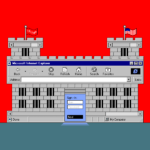(I’m republishing posts on my My All-Time Favorite Posts list. This one appeared in 2019. You can see them all here.)
geralt / Pixabay
Earlier today, I posted WHAT I WANT TO DO BETTER NEXT SCHOOL YEAR – HOW ABOUT YOU?
A few hours later, I realized that I had omitted another of important change I want to make – shake up how I have students read our History textbook.
All-too-often, the sequence is that I pre-teach key words, students then read in pairs, taking turns reading each paragraph aloud, circling new words and writing a summary at the bottom of each page. We then review the pages and summaries as a class. Other times students work in groups of three doing something similar, but with the addition of using little whiteboards where they write down what the reader is saying.
Of course, we do a zillion other activities besides reading and reviewing the textbook, too.
It goes well, and students clearly learn a lot and enjoy the class.
I periodically change things up a bit in approaching how we read the chapter, but not often enough.
So, here is a list of different ways we’ve read the chapter, and I hope readers will contribute more. The problem is that I only use some of these strategies once a year because I forget about them, and easily fall into a rut of doing the same thing every time.
I think making this list, inviting other ideas, and keeping it more visible to me will prompt me to mix-it-up more.
Here it is (several include links to resources and student hand-outs I use):
1.Read with a partner, taking turns reading each paragraph. Circle new words, write a summary for each page.
2. Read in groups of three, using a little whiteboard, taking turns to read each paragraph while others write it down on whiteboard without looking. Circle new words, write a summary for each page.
3. Do numbers one and two, add writing down a question for each chapter or for each page. Have students identify most interesting question to them at end of unit and research the answer. Teach the difference between “right there” and “think about” questions (see more about literal & interpretative questions here).
4. Each student creates a timeline of what they think are the seven most important events in each chapter, reflect the level of importance of each event and explain why it’s important.
5. Do a 3-2-1 poster of the chapter’s content (see The Best Ways To Use “3-2-1″ As An Instructional Strategy)
6. Do a form of inductive learning/teaching (The Best Resources About Inductive Learning & Teaching) by having students create categories (or teachers provide three-or-four categories) and they have to add information from the chapter to each. Then, they can search for additional information to add to the categories from other sources.
7. Do a version of number six as a mindmap (see here).
8. Provide a graphic organizer for students to complete using various models including Cause & Effect and Problem/Solution.
9. List the three most important words in the chapter and explain why they are important (see here).
10. Read the chapter as a jigsaw activity.
11. Pick a scene out of the chapter and prepare a one minute skit of it to act-out for the class with a partner. Additional research might be needed.
12. Draw a comic strip of the most important event in the chapter.
ADDENDUM: Number 13: A Simple Trick for Success with One-Pagers is from Cult of Pedagogy
3 Ways to Ask Questions That Engage the Whole Class is from Edutopia. I like the third way: Pause, Star and Rank.
Again, please contribute more ideas!
You might also be interested in The Best Resources For Adapting Your Textbook So It Doesn’t Bore Students To Death.
(I’m republishing posts on my My All-Time Favorite Posts list. This one appeared in 2019. You can see them all here.) Earlier today, I posted WHAT I WANT TO DO BETTER NEXT SCHOOL YEAR – HOW ABOUT YOU? A few hours later, I realized that I had omitted another of important change I want a look back Larry Ferlazzo’s Websites of the Day…




